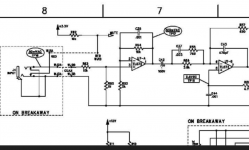Interestingly, a (protective) 2k resistor at room temperature, i.e. 20 degrees C, generates a noise voltage of about 6 nV/root Hertz.
This is as big as the equivalent input noise voltage of an NE5532 itself, at nominally 5 nV/root Hertz!
If you have seen many opamps with input directly connected to ground fail, then there is at least some experimental data to support the hypothesis. And it is relatively easy to think of possible causes of the failure, such as brief drastic fluctuations in the nominally 0-volt ground line, caused by electrostatic discharge when someone walks across a carpet and then touches in input jack, or plugs in a 1/4" cable. Or even RF noise picked up from a powerful radio transmitter in the vicinity.
So we don't have to invoke any mysterious unknown mechanisms to account for such failures. We already know that if you pulse too many joules into the base of a BJT, it will fail!
I have a Fender Super Champ XD, a hybrid guitar amplifier that includes BJT op amps, CMOS DSP chips, and a pretty traditional "classic" vacuum-tube power amplifier section. Mine is still alive eight years after I bought it, but online user reports suggest that a number of these amps have failed suddenly and for no apparent reason. The failure symptoms almost always point to immediate and complete failure of the CMOS DSP/digital section.
I think it takes good engineering and design (including good PCB layout) to get good reliability out of a PCB that lets 400 volts co-exist on the same board as CMOS devices that fail at anything above 5 volts.
-Gnobuddy
